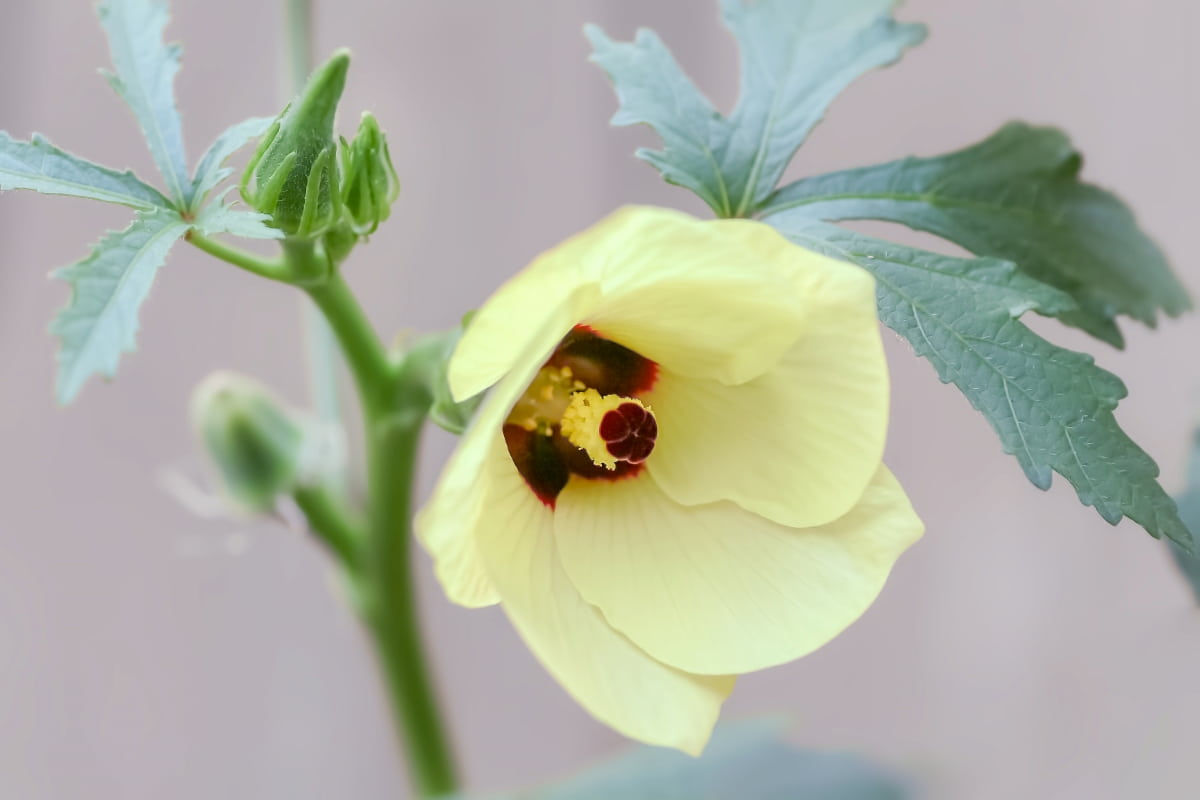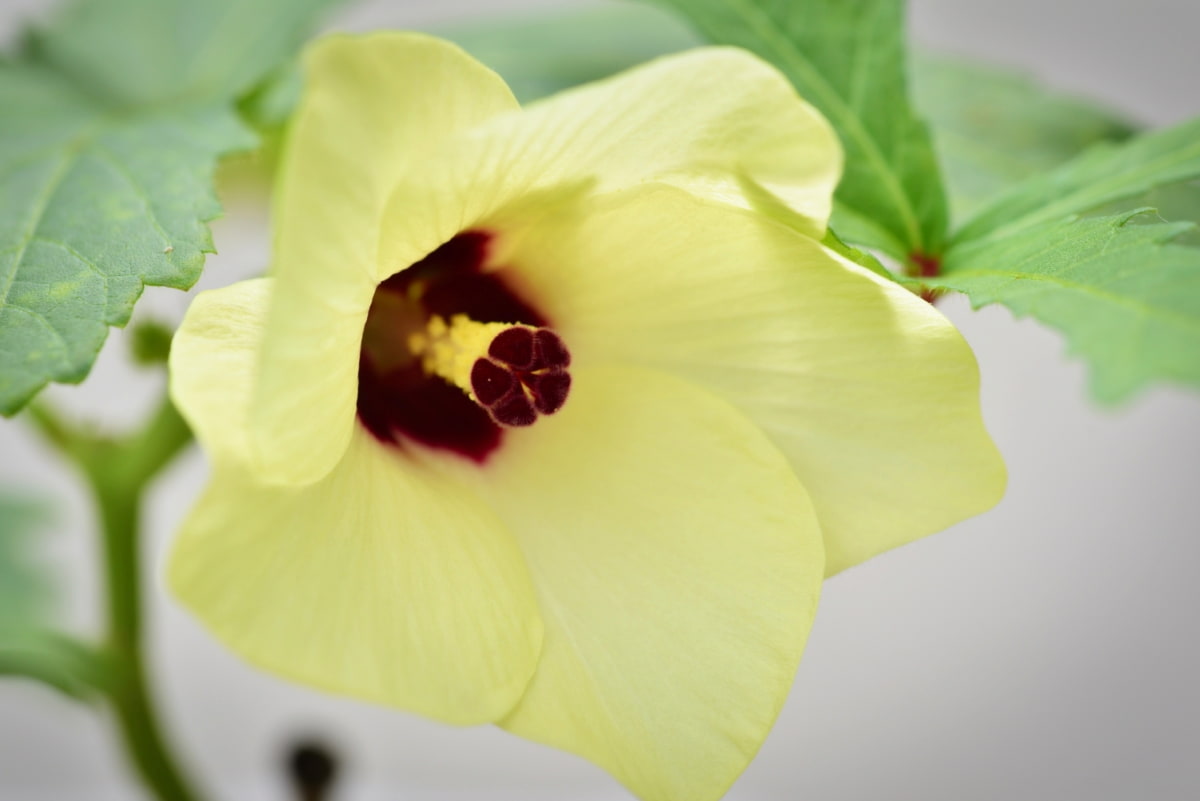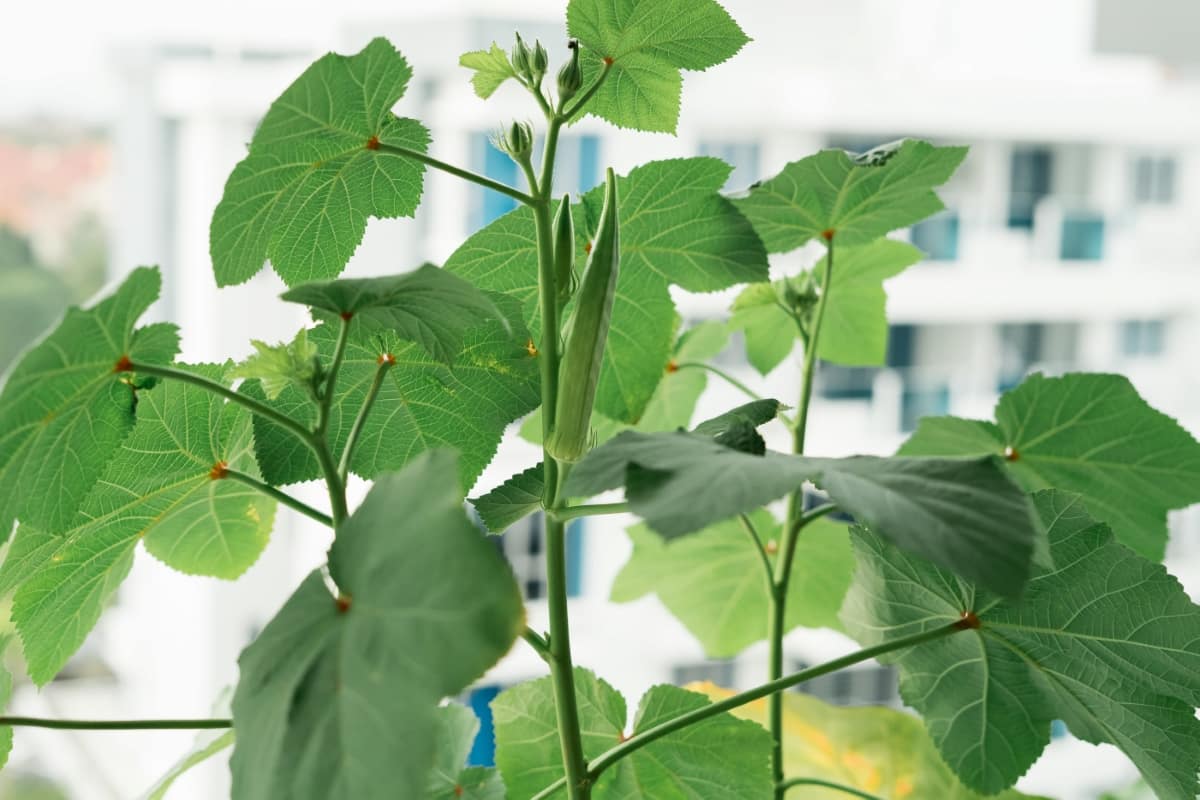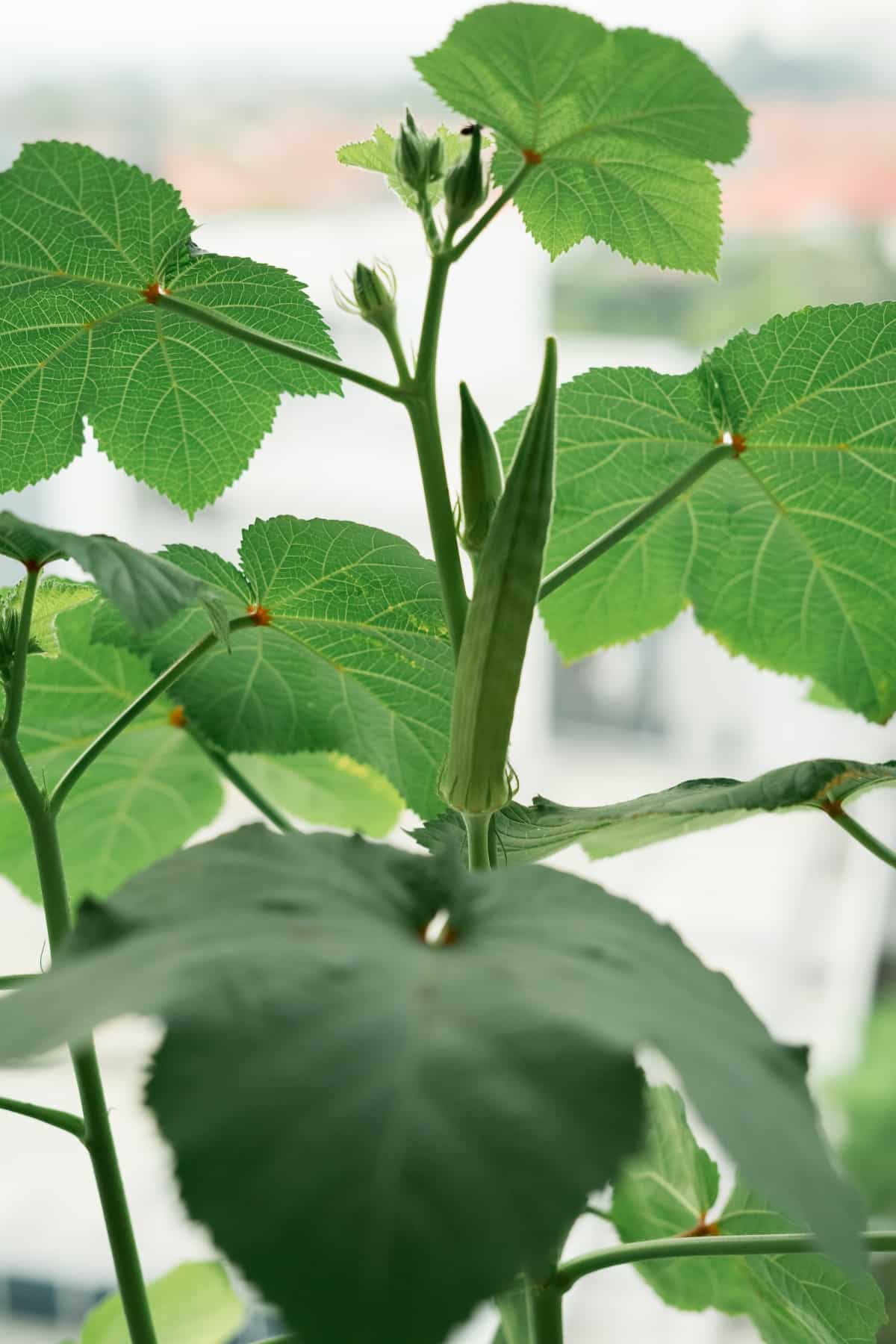Okra leaf spot can be a pesky problem for gardeners, but there are natural and organic methods to help control this issue. Regular monitoring is key in detecting early signs of Okra leaf spots before they become significant problems. The benefit of controlling Okra Leaf Spot naturally is that it promotes overall plant health. Natural treatments help strengthen the immune system of Okra plants, making them more resistant to leaf spot diseases. This means healthier plants with improved yield and quality.

How to Control Okra Leaf Spot Naturally
Okra Leaf Spot Causes, Symptoms, and Impact on Plant Health
The leaf spot diseases of Okra are typically caused by fungi such as Alternaria sp. and Cercospora sp. These fungi create brown concentric spots on the leaves of the plant. The size of these spots can vary, but they often form a distinctive pattern that sets them apart from other types of damage. Natural methods can control their spread and minimize their impact on plant health.
By understanding the specific characteristics of each leaf spot disease affecting Okra plants, you can identify them more accurately. This knowledge will help you determine which natural treatments will most effectively combat the specific fungus causing the problem. Regular monitoring is key in managing leaf spot in your Okra plants. By detecting any signs or symptoms early on, intervention measures can be taken promptly before further damage occurs.
Identifying the Different Types of Okra Leaf Spot and Their Characteristics
Leaf spots on Okra are typically caused by fungi such as Alternaria sp. and Cercospora sp. These fungal diseases manifest as brown concentric spots on the leaves, which may vary in size. It’s important to note that these diseases are relatively rare in Okra plants and often do not require fungicides for treatment.
Differentiating between the various types of leaf spots can help determine how best to manage them. For example, Alternaria leaf spot usually appears as small dark brown or black circular lesions with a yellow halo around them. On the other hand, Cercospora leaf spot exhibits larger irregularly shaped tan lesions with a dark margin. Regular monitoring will enable you to implement timely strategies for prevention and control while maintaining an organic approach.
The Importance of Natural and Organic Treatment for Controlling Okra Leaf Spot
By opting for natural and organic treatment methods, you can avoid using harmful chemicals that could harm other beneficial insects and organisms in your garden. Furthermore, choosing natural methods helps promote biodiversity in your garden. Natural treatments allow beneficial insects like ladybugs or lacewings to thrive and keep pests under control naturally.
In case you missed it: How to Control Okra Bacterial Wilt Naturally: How to Get Rid of This with Natural and Organic Treatment

Natural treatment options are cost-effective in the long run since many homemade sprays can be easily made from household items like vinegar or baking soda. This saves you money and reduces reliance on expensive commercial products.
Creating a Healthy Growing Environment for Okra Plants to Prevent Leaf Spot
By providing optimal conditions, you can strengthen the plant’s natural resistance and minimize the risk of infection. Ensure that your Okra plants are receiving adequate sunlight. Okra thrives in full sun, so choose a location with 6-8 hours of direct sunlight daily.
Next, pay attention to proper watering practices. Adequate spacing between plants is crucial for good air circulation. Crowded plants trap moisture and increase humidity, creating an ideal breeding ground for fungal pathogens. Space your Okra plants appropriately according to their recommended distance apart. Regularly inspect your Okra plants for any signs of leaf spot disease or other pests.
Implementing Proper Crop Rotation Techniques to Minimize Leaf Spot Incidence
Crop rotation involves systematically changing the location of crops within a field or garden each season. This practice helps break the life cycle of pathogens and reduces their ability to establish themselves in the soil. The important aspect of crop rotation for controlling leaf spot is avoiding planting Okra or other susceptible plants in the same area year after year. Instead, rotate them with unrelated crops like tomatoes, cucumbers, or beans that are not affected by the same pathogens.
Utilizing Beneficial Insects and Predators to Control Okra Leaf Spot Naturally
These beneficial insects can act as natural enemies of the pests that cause leaf spot diseases in Okra plants. Ladybugs, lacewings, and parasitic wasps are beneficial insects that feed on aphids, known carriers of fungal spores responsible for leaf spot. Another predator that can come to your aid is the praying mantis.
These hunters prey on aphids and other small insects that may contribute to spreading disease. Consider planting companion flowers like marigolds or dill near your Okra plants to attract these beneficial insects. The bright colors and enticing scents will draw them in while adding beauty to your garden.
Applying Homemade Organic Sprays to Combat Okra Leaf Spot
Neem oil has antifungal properties that can inhibit the growth of fungi, causing leaf spot on Okra plants. A baking soda solution is another homemade organic spray to control the Okra leaf spot. The alkaline nature of baking soda creates an unfavorable environment for fungal growth. Garlic-infused sprays are also useful in combating leaf spot naturally. Always apply these homemade organic sprays early in the morning or late evening when temperatures are cooler to prevent damage from sunburn.
Enhancing Soil Health and Nutrient Balance to Strengthen Okra Plants’ Resistance to Leaf Spot
To enhance soil health, it’s important to ensure the soil is well-drained and has good organic matter content. Adding aged manure can help improve the structure of the soil, allowing for better water infiltration and root development. It’s also beneficial to conduct regular soil testing to assess nutrient levels and make necessary adjustments. This will help maintain optimal conditions for your Okra plants, making them more resilient against leaf spot diseases.
Pruning and Proper Plant Spacing Techniques for Improved Air Circulation and Reduced Leaf Spot Risk
It is crucial in improving air circulation around Okra plants, which can help reduce the risk of leaf spot disease. By strategically trimming back branches and removing any overcrowded foliage, you create space for better airflow throughout the plant canopy. When pruning Okra plants, removing any diseased or damaged leaves is important as soon as they are noticed.
In case you missed it: How to Control Caterpillars on Okra Naturally: How to Get Rid of Them with Natural and Organic Treatment

This prevents infection and allows optimal sunlight penetration, which is essential for healthy growth. Proper spacing ensures that each plant has enough room to grow without being crowded by neighboring plants. This reduces moisture buildup and creates an environment less favorable for fungal pathogens.
Regular Monitoring and Early Detection of Okra Leaf Spot for Prompt Intervention
One way to monitor your plants is by visually inspecting the leaves for visible symptoms such as brown concentric spots or lesions. It’s important to pay close attention to both the upper and lower surfaces of the leaves, as well as other parts of the plant, including stems and pods. In addition to visual inspection, using a hand lens or magnifying glass can also be helpful to get a closer look at any suspicious spots or lesions.
If you do notice any signs of leaf spots on your Okra plants, it’s important to take immediate action. This may involve removing affected leaves or even entire plants if necessary. Disposing of infected plant debris properly is also recommended so as not to spread the disease further.
Frequently Asked Questions about Okra Leaf Spot
Can I Prevent Okra Leaf Spots Without Using Chemicals?
Yes. Natural prevention methods are effective in Okra plants. Enhancing soil health through regular composting enriches it with essential nutrients your plants need to resist infections better. Pruning your Okra plants regularly helps improve air circulation around them, reducing humidity levels that favor fungal growth.
How Do You Treat Leaf Spot Disease Naturally?
There are several natural treatments for leaf spot disease on Okra plants. These include applying neem oil or garlic spray as fungicides or using compost tea to boost plant immunity.
Are All Types of Fungus Responsible for Causing Okra Leaf Spots Harmful?
Not all fungi that cause Okra leaf spots pose significant harm to plant health or yield. Some species may only result in cosmetic damage, while others could lead to severe defoliation if left untreated.
Can Companion Planting Help Reduce Instances of Okra Leaf Spot?
Yes. Companion planting certain herbs like basil or marigold around your Okra plants can deter pests that may spread fungal spores responsible for causing Leaf Spot Disease.
In case you missed it: How to Control Okra Leafhoppers Naturally: How to Get Rid of Them with Natural and Organic Treatment

Conclusion
Leaf spots can be a common issue for Okra plants, causing damage to their overall health. The important aspect of controlling Okra leaf spot naturally is creating a healthy plant growing environment. This includes providing adequate sunlight, ensuring proper drainage, and avoiding overwatering. By optimizing these conditions, you can prevent the development and spread of leaf spot diseases.
- Types of Fungicides Used in Agriculture
- Common Issues in the Fruit Development Stage of Pomegranate Farming
- Fruit Development Issues in Papaya: Easy Solutions and Treatment
- Soil-Borne Diseases and How to Protect Your Plants
- Practices to Prevent Disease Spread in the Garden
- From Wilted to Thriving: How to Treat Root Rot Naturally in Houseplants
- Natural Remedies to Cure Brown Spots on Fig Tree Leaves
- Natural Solutions for Poinsettia Problems: 100% Effective Remedies
- How to Control Calla Lily Problems: Natural Remedies for Leaf and Flower Problems